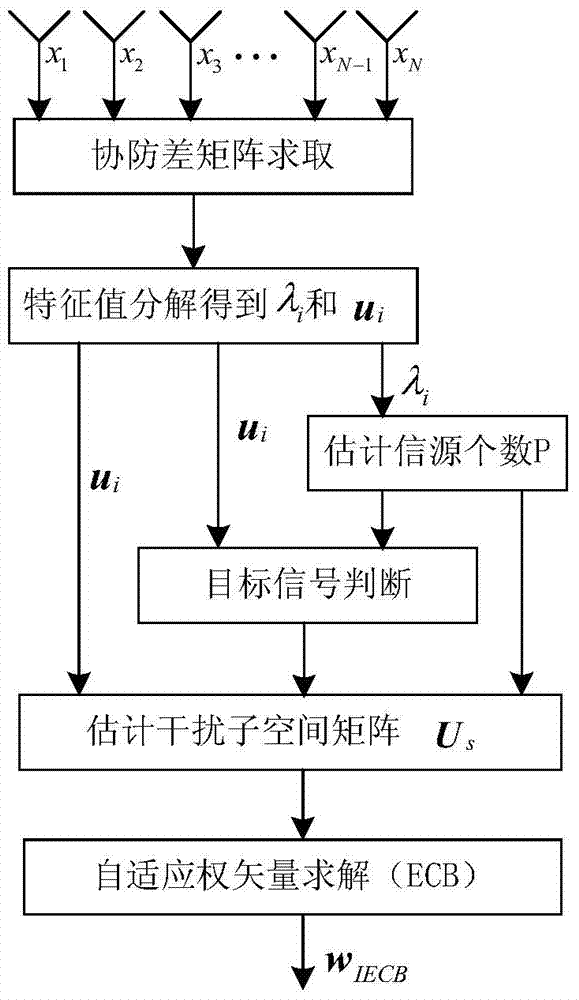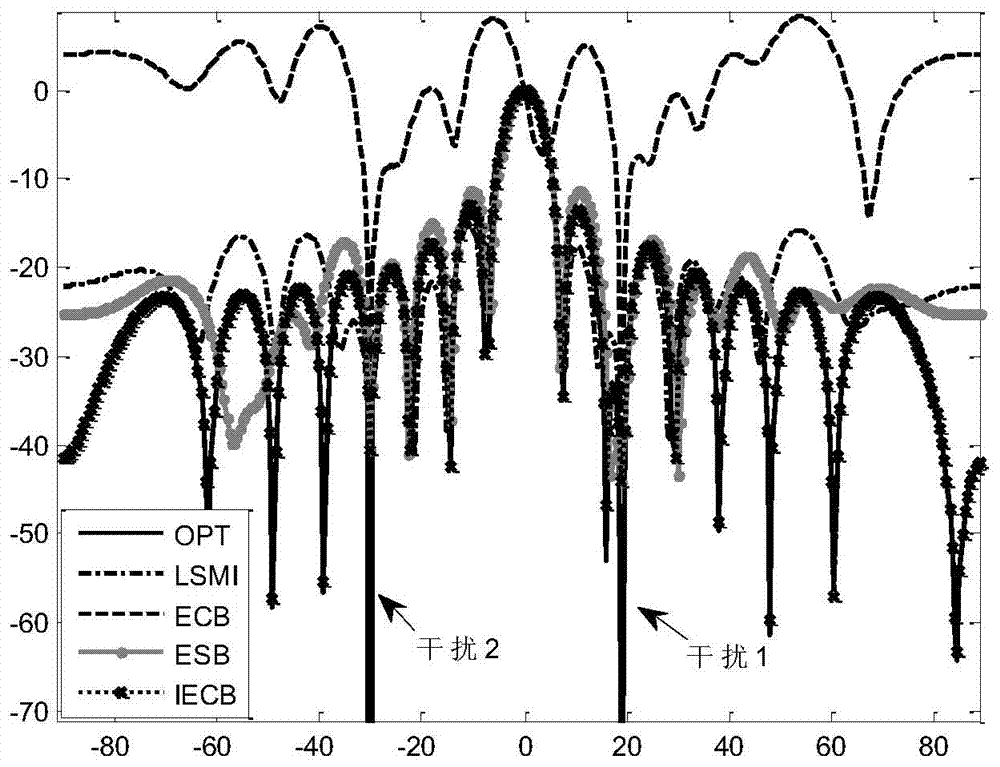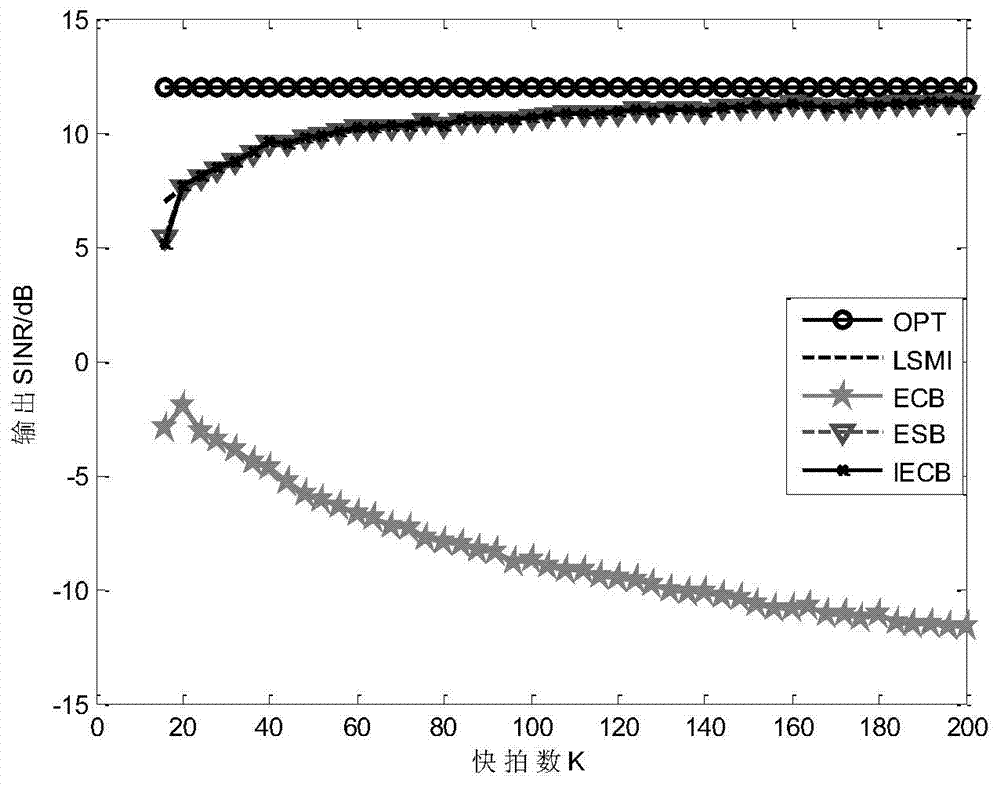Feature interference cancellation beam forming method based on estimation of number of information sources
A beam and number technology, which is applied in the field of adaptive beamforming, can solve the problems such as the degradation of the desired signal performance, achieve good anti-interference performance and avoid the effect of cancellation phenomenon
- Summary
- Abstract
- Description
- Claims
- Application Information
AI Technical Summary
Problems solved by technology
Method used
Image
Examples
Embodiment 1
[0039] The method comprises the steps of:
[0040] Step 1, the array antenna receives incident waveforms of multiple signal sources, obtains a snapshot data vector of the incident waveform, performs array covariance matrix estimation and eigenvalue decomposition on the snapshot data vector, and obtains the eigenvector space of the snapshot data vector; This step includes the following steps ① to ③:
[0041] Step 1. Establishment of the signal model received by the array antenna;
[0042] In this embodiment, a uniform linear array is adopted, that is, an equidistant linear array composed of N isotropic array elements, assuming that there is a target signal and M narrowband interference signals incident as plane waves in the far field,
[0043] Arrival angles are θ 0 and θ 0 , θ 1 , ~, θ M , then the N×1-dimensional snapshot data vector x(t) received by the array can be expressed as
[0044] x(t)=As(t)+n(t) (1)
[0045] In the formula, x(t)=[x 1(t),x 2 (t),...,x N (t)]...
Embodiment 2
[0086] This embodiment is based on Embodiment 1, and the design parameters are shown in Table 1.
[0087]
[0088] The present invention compares the adaptive weight vectors obtained by the following algorithms:
[0089] 1. OPT under ideal conditions; 2. Diagonal loading algorithm LSMI, the diagonal loading amount is 10 ; 3. The characteristic interference cancellation algorithm ECB; 4. The adaptive beamforming algorithm ESB based on the characteristic subspace; 5. The improved ECB algorithm IECB of the present invention.
[0090] figure 2 When flag=1, the adaptive beam pattern of the method of the present invention and traditional ECB and other common algorithms, wherein the direction of the target signal is θ 0 =0°, intensity SNR=0dB, number of sampling snapshots K=2N, 1 Monte Carlo simulation. figure 2 Among them, the adaptive beam pattern of the method of the present invention almost coincides with the optimal beam pattern, while the ECB algorithm produces target ...
PUM
 Login to View More
Login to View More Abstract
Description
Claims
Application Information
 Login to View More
Login to View More - R&D
- Intellectual Property
- Life Sciences
- Materials
- Tech Scout
- Unparalleled Data Quality
- Higher Quality Content
- 60% Fewer Hallucinations
Browse by: Latest US Patents, China's latest patents, Technical Efficacy Thesaurus, Application Domain, Technology Topic, Popular Technical Reports.
© 2025 PatSnap. All rights reserved.Legal|Privacy policy|Modern Slavery Act Transparency Statement|Sitemap|About US| Contact US: help@patsnap.com



